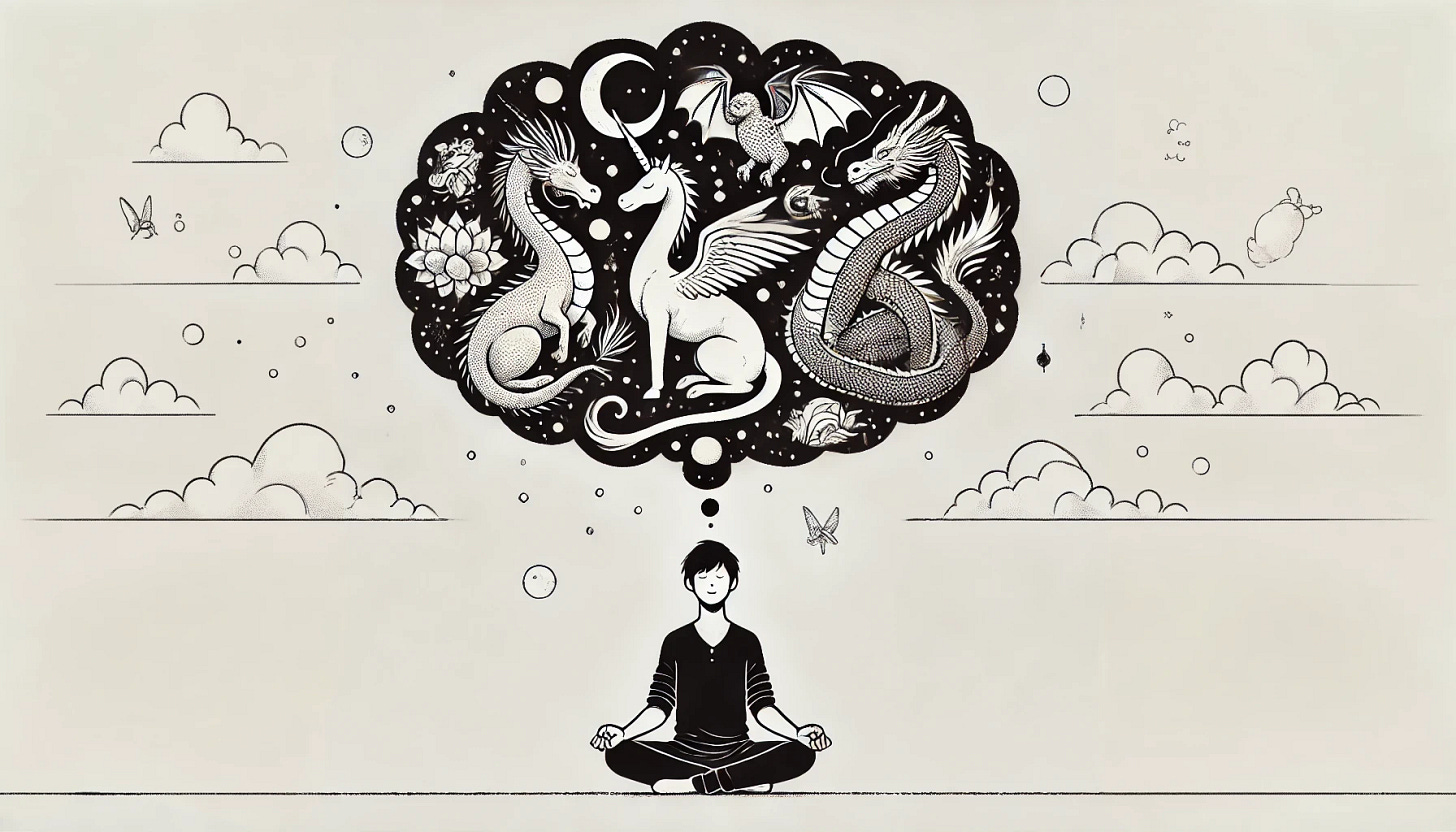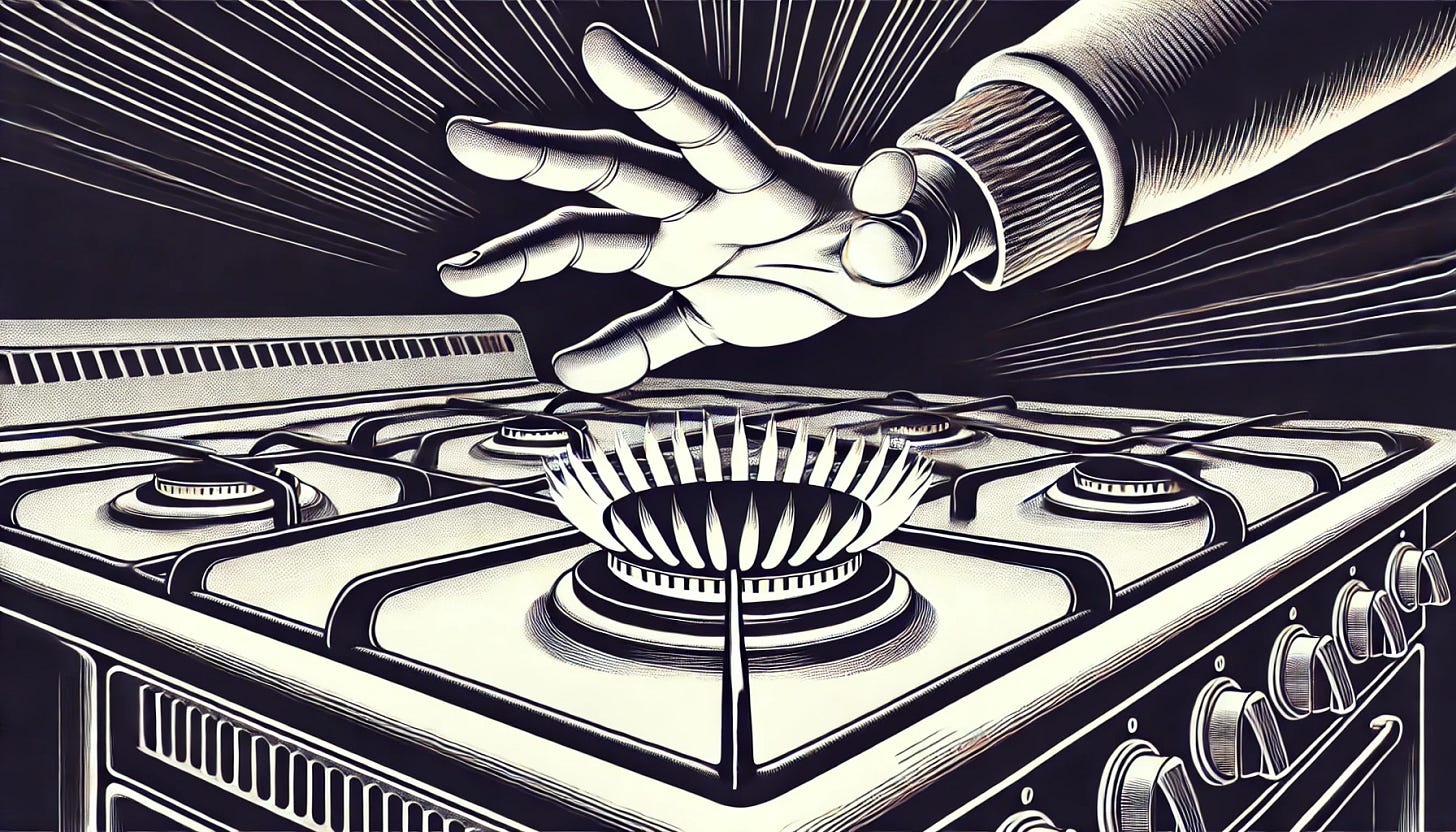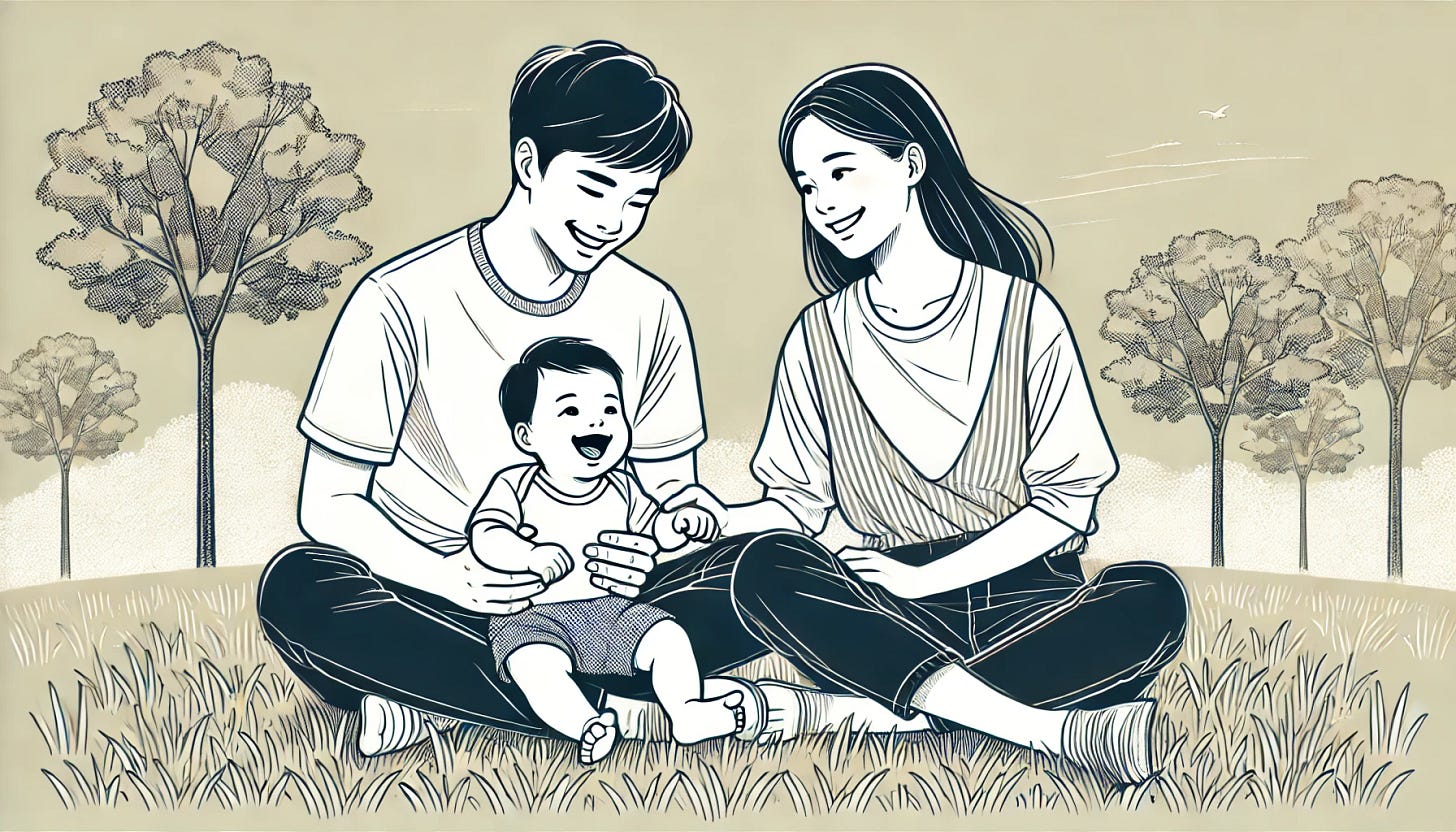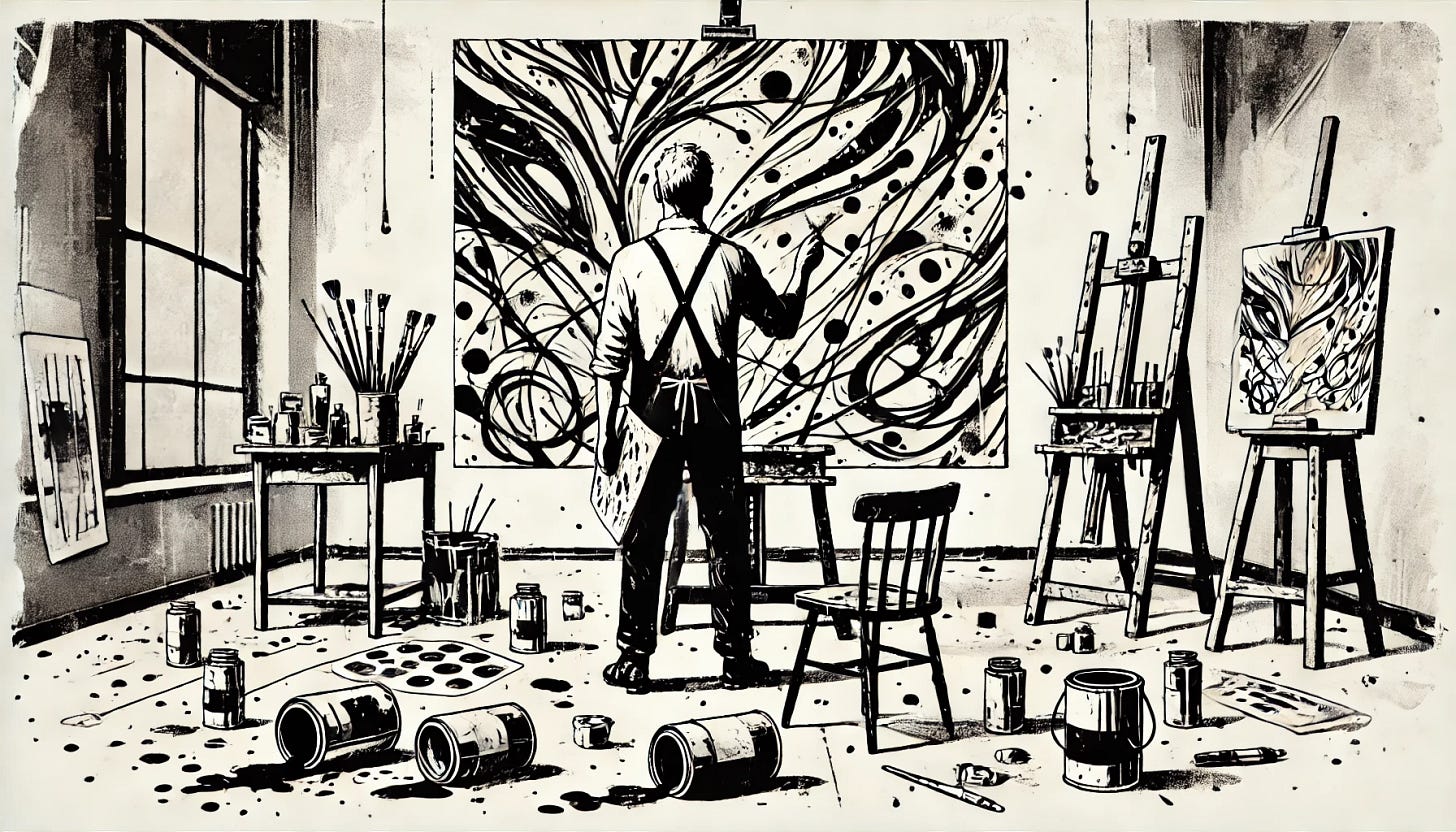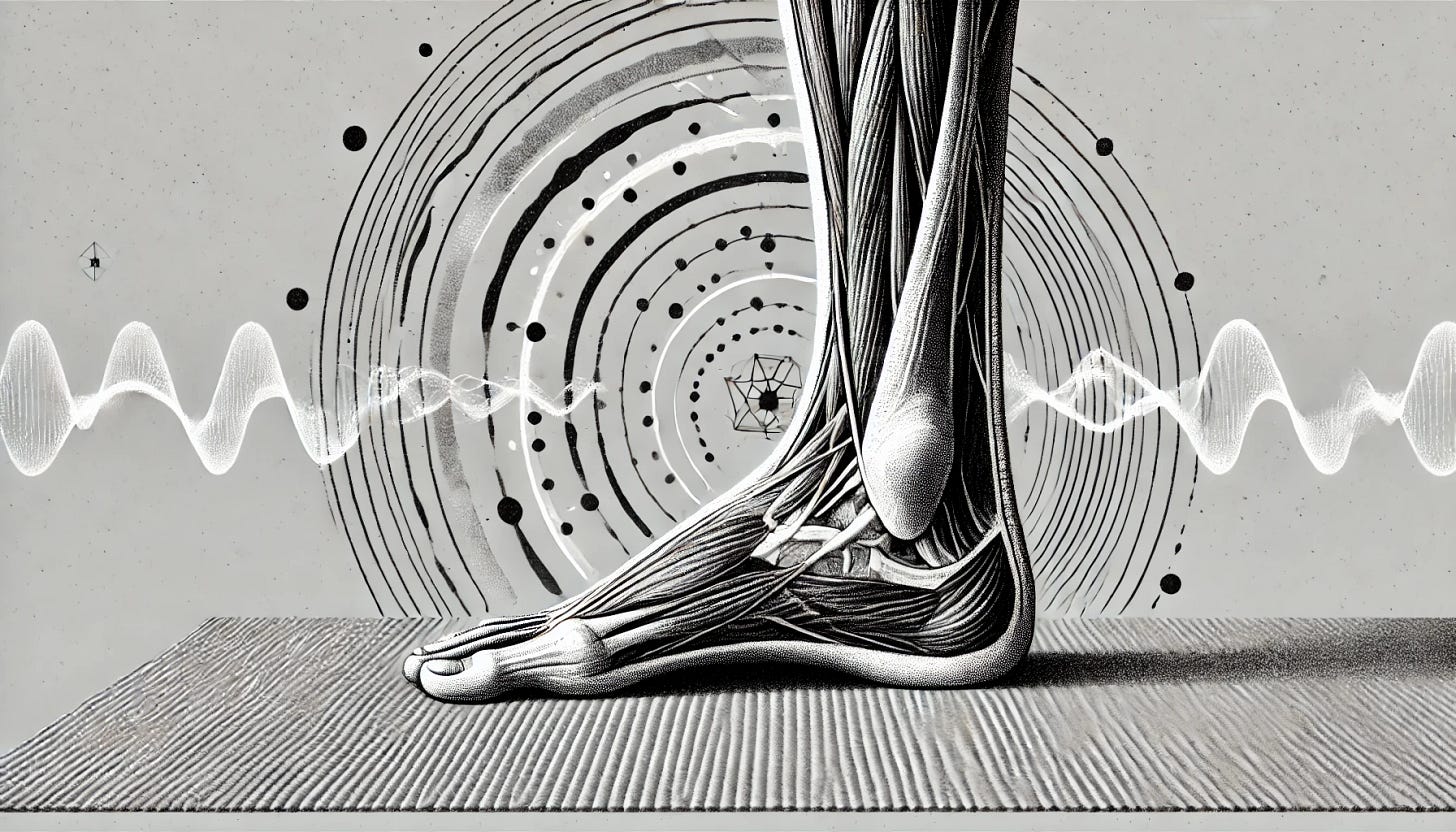Some Words Are Just Words
Sutra 9: Śabda-jñānānupātī vastu-śūnyo vikalpaḥ— Imagination (vikalpa) is knowledge based on words without an actual corresponding reality.
If you want to get technical, all words are ‘just words’.
But some words are really just words.
शब्दज्ञानानुपाती वस्तुशून्यो विकल्प Śabda-jñānānupātī vastu-śūnyo vikalpaḥ Imagination (vikalpa) is knowledge based on words without an actual corresponding reality.
This, the third of the five vrittis (mental fluctuations), can be boiled down to one “just word”: vikalpah.
The simplest way to translate it is “verbal delusion” or “imagination”.
So we have:
Right knowledge — thought that is based on an accurate perception of reality
Misconception — thought that is based on an inaccurate perception of reality
Verbal Delusion — thought that is not based on reality at all.
In examples:
You see a snake coiled in the grass and you think, “oh shit, a snake!”
You see a rope coiled in the grass and you think, “oh shit, a snake!”
You see nothing but grass, and you still genuinely think, “oh shit, a snake!”
Now, there are several ways to approach this idea of vikalpah, and I could very much get lost in the weeds here batting around the idea that all words (and the thoughts they represent) are forms of delusion, being mere derivations of the reality they are formed to (often inadequately) represent.
But I’m going to try and take the most practical route here since yoga is meant to be a practical practice for practitioners to practice being practical in terms of their spiritual growth 😉
And remember that Patanjali is laying these vrittis out for the sake of our being able to distinguish type from type.
Thoughts arising is an inevitability — the idea is to get comfortable with knowing their nature and become more and more able to sit in the seat of the observer while thoughts are arising, instead of being carried away or having your awareness completely obscured (being totally lost in thought).
So here’s the first assumption to hold in mind:
Thoughts have real consequence in your life.
We tend to think of consequences mainly in terms of tangible, physical occurrences.
if put hand on hot stove, be burned, feel pain
if step on snake, be bitten, feel mortal fear
Our emphasis is generally on the if/then dependent end states (burned/bitten) & the sensations/emotions that arise as a result of those states of being (pain/fear). We think primarily of the physical effects, and the cause is considered the action that was taken (intentionally or unintentionally) to create said effects.
But unless you’re in a blind rage or you’re a zen master, there were probably some thoughts that happened before those actions were taken.
“I’m just a little baby and I’ve never touched a hot stove before, so I’m going to try and see what happens”
“I’m out for a nice walk in the woods, I’ve been by here before and nothing bit me, so I don’t need to watch my step”
Those are obviously not verbatim thoughts, but they describe the mindset of an individual about to experience physical consequences for an action they are choosing to take, and that mindset is composed of the thoughts with which we choose to engage.
The point is to remember that before the moment of action & consequence occurs, there are chains of thought that effectively determine the choice being made.
We might sometimes convince ourselves that choices are “spontaneous” or “intuitive”, but truly they depend on at least some form of thought, either conscious or subconscious. It’s ok to characterize them as spontaneous/intuitive, but those decision making models are really just drawing on information that isn’t explicit (not occurring in the pre-frontal cortex).
It’s not necessarily a bad thing to act on thoughts that aren’t based in hardcore reason. There are some fun studies / books out there that explore how to differentiate between these, and how we could actually leverage both forms of thinking in our lives.
For the sake of being practical, I’ll cut right to the TL;DR —
Becoming more familiar with the different types of thought gives you more agency over the eventual consequences of your action.
Given that the actions you take are based (either consciously or unconsciously) on the mindset in which you find yourself when the moment of choice arrives, we should recognize that engaging with thoughts that are not based on reality (vikalpah) can only lead us into mistakes, further delusion, and pain.
For those of you that are thinking: “what about creativity? that’s based on imagination, surely that isn’t a mistake”, I’ll return to this objection later on.
Returning to the examples of action/consequence with the baby and the woods walker,
The first is an example of simple ignorance — the baby just doesn’t know that the stove will burn them.
The second is an example of two-fold ignorance — the person walking in the woods doesn’t know if there’s a snake in the grass, but they believe that they do know (that there isn’t one).
As our lives unfold, a lot of time is spent on exploration, particularly in childhood. We go and do new things and as a result, we learn. Usually it only takes a few repetitions to acquire the knowledge that “if put hand on stove, hand hurt”.
Again, those kind of physical consequences are easy to track (and remember). But there are also less tangible scenarios where you may find yourself experiencing the same consequences over and over (due to actions you take or fail to take) without understanding why.
Think of the young man who can’t seem to commit to a relationship. Repeatedly, he dates a new person, develops a connection with them, then runs off when things get serious. For a young man, it’s easy to dismiss such behavior…”he’s just young, doesn’t know what he wants”. He’s also easily distracted by the next chase, and doesn’t dwell for long on the pain of breaking up.
However, when this behavior extends into middle age (as we can observe often happens in our society) the results can become quite painful for both sides of the equation. He knows he wants intimacy and commitment, but always ends up running away at the last moment. As a middle-aged man, it becomes harder and harder to find new romantic partners, and the consequences of his inability to understand the reasons behind his repeated reaction of “running off” become more harsh.
So what’s going wrong?
If even a baby can learn “I don’t put my hand on the stove because it’s hot and it will hurt” then surely an adult can learn “I don’t feign romantic commitment when I’m unsure because I will eventually feel trapped, and breaking off relationships hurts”, right?
It’s easy to assume that some people are just “dumb” or “selfish” and are either incapable of piecing together this kind of reasoning, or simply proceed despite awareness of the consequence (they feel the benefits are worth the suffering, for themself or others). But I think there’s a deeper failure to examine, and it is present in us all to some extent.
The problem is more likely to be that we are basing our decisions off of thoughts that have no correlation to reality.
We all, to some extent, have an image of what the ideal life would look like. A snapshot of a happy family walking on the beach holding hands, or of a business tycoon toasting his sons as they take over the family business.
Whatever it might be for you, consider that it’s entirely falsified. You can choose to believe that your life is taking in you that direction, but you can’t possibly know. Furthermore, unless you are physically inside that snapshot yourself at exactly this moment, you can’t truly know the totality of what those idealized people are feeling, what they passed through to be there, or where their trajectory is taking them next.
In the most real sense, those ideas are figments of your imagination. Full stop! That’s what they are.
Yet we tend to treat them as if they had determining impact over our moment to moment happiness.
We see the way our life turned out and figure that if we had been able to “dream a little bigger” we could have achieved more. Or we find ourselves in a pleasurable moment and suddenly are lost comparing the experience to what we assume the “better” one will (hopefully) soon be like.
Just the other day I was chatting with my wife about how awesome it is having our son and becoming parents this year. We were both congratulating ourselves on making it through the infancy phase — “that wasn’t so bad!”, and cheerfully lauding the years to come — “this has been so good already, and it’s gonna get even better!”.
I obviously hope that’s the case, but I don’t actually have as much control over how the next years play out as I might believe. If it needs to be “better” than what I’m experiencing now in order to continue being at least as happy as I am now, I’m setting myself up for misery in the years to come.
What I do have control over, however, is the level of awareness I bring to my thinking as I navigate the decisions of life and parenthood. But it can be challenging to do so, and I think many of us actively avoid looking at that too closely.
Perhaps on some level we understand that an awareness of the nature of the thinking that determines our actions necessarily implies responsibility.
And who wants responsibility?
This understanding that awareness implies responsibility is reflected in our legal system.
First degree murder is “premeditated” meaning that someone thought it through and decided to do it despite understanding that it entails grave consequences. It usually carries a life sentence (25+ years) because, simplistically, said person has demonstrated that they do not view themselves as beholden to the agreed upon societal norms and laws we’ve collectively set down.
Second degree murder is “heat of passion” meaning that someone was essentially not in a reasonable state of mind when they did what they chose to do, meaning, they weren’t considering the consequences due to the circumstances. If they had, they likely wouldn’t have committed the crime. These instances usually carry shorter sentences (10-15 years) because, simplistically, said person merely transgressed societal norms due to circumstance, rather than innate malice.
Third degree murder (depending on the state, can be defined as “voluntary or involuntary manslaughter”) is “accidental” meaning that the intent was not to end someone’s life, but it did occur as the result of willful or unwillful recklessness. These instances sometimes don’t carry jail times at all, and if they do only a few years is typical.
Sorry, here’s one more Seinfeld clip 🤣 last one, I swear.
At the end of the day, nobody can be responsible for our actions other than ourselves. So it should behoove of us to thoroughly examine the origins of those actions, shouldn’t it?
I said earlier that engaging with thoughts that are not based on reality (vikalpah) can really only lead us into mistakes, further delusion, and pain.
This assertion is based in the Buddhist tenet (from the Four Noble Truths) that the source of all suffering is “craving”, or wanting things to be other than they are. And it stems from avidyā — ignorance of the true nature of reality.
Here is where I personally tend to break with hardcore Buddhists. There’s a level of apathy that can occur when you approach the idea that you shouldn’t wish for things to be different (without a holistic view). Smarter people than I have driven more meaningfully into that schism and articulated ways that you can still be a Buddhist and also be willing to take action to make the world a better place.
The key point that I want to highlight within this context is centered on creativity. I think people often fall into the trap of thinking that creativity is the process of making things that are entirely new, with a healthy imagination being the fuel for those inspirations. Many artists describe the notion that something else is channeling through them when they are making transcendent art. Regardless of the origins of inspiration, there is still always the factor of medium that, in one sense, limits the art…but in a more practical sense, facilitates its existence in the first place.
You can paint whatever you want, but you can’t paint a new color.
There exists only more and more complex combinations of the wavelengths of light that we can see. So on a core level, the artist’s imagination simply rearranges what already existed. Their creation does not actually add to or detract from the pre-existing substrate from which it arises.
That’s what we’re practicing the ability to perceive in yoga. And from practice, what tends to get most in the way of that perception?
Thoughts. Delusions. Desires.
So this practice can understood as a way to learn how to perceive each form of thought as it is, so that we aren’t making decisions based on notions with no relation to reality.
The image of me doing a forearm stand that I hold in my mind when I want to either inspire myself to try harder (or ridicule myself for not being “better at yoga”) is an example of vikalpah. I’ve never once done a forearm stand before, yet I can picture myself doing the pose and generate the feelings of either contented or discontentedness as a result.
Now, there are plenty of people who seek to wield vikalpah to create results in the opposite direction (of pain and suffering). I’ve not studied these modalities closely yet because, honestly, they set off my BS alarms too quickly. But basically, to my understanding, the thinking is if you persistently imagine yourself in a desire state, you’ll put yourself in the mindset needed to achieve it, and make the “right” decisions at every juncture to arrive there.
It’s the people that say “manifest” as if they were magicians or conjurers. There is, of course, some logic to that way of thinking. But to my humble analysis, the results of such thinking rely entirely on confirmation bias. In the most blunt of terms, I think it’s merely a way to justify (and take a false sense of agency over) pure good luck.
Of course the place you end up is exactly where you’re “supposed to be” because you’ve had your mind fixed on your goal and you’re trusting it to guide you through the twists and turns along the way. But we have no real capacity for comprehending if the end state we achieve is actually the most optimal or desirable that was possible from whatever circumstances we passed through.
If you were too busy picturing yourself in that penthouse apartment with a million dollars (or a million chihuahuas, I don’t judge 😏) you might have missed a multitude of other paths along the way that could have been equally or even more satisfying.
I’m not advocating for complete nihilism or trying to say that setting goals is inherently bad — merely pointing out that it’s far better to focus on goals that are within reach that reasonably might lead to the end results we think we want, but remain open to all possibilities (instead of obscuring our perception with a blanket presumption of what success looks like, which can only be based on what we now (myopically) perceive).
When I’m working on forearm stand, I need to recognize that vikalpah for what it is before it misleads me. The image of me floating on my arms does not include the feelings of adequate strength in my shoulders or proper engagement of my core. Those are the things that ultimately inform the expression of the pose.
So sure, I can imagine myself in a forearm stand and start by putting my forearms on the ground. But from that point, my focus must be trained exclusively on the information that arises in my awareness that determines whether or not I can physically lift the rest of my body above me in that position.
Do I feel strong or weak in my shoulders?
Are my hips actually above my shoulders?
Is my tailbone tucked or is it flaring out, compromising my low back?
Where am I looking and how does it affect my neck?
Manifesting is literally just bringing something about that wasn’t there before. But nothing can come from nothing. Far more valuable it is to see the materials you are working with in the moment for exactly what they are.
So with all that said, how do you recognize vikalpah for what it is?
Instead of trying to name vikalpah while in the midst of a storm of various forms of thought, I think the easier and more practical route is to work on filling the space with right knowledge first.
That begins with tuning into the raw sensations of being.
Instead of starting from “when I place my foot forward into warrior 2, is it under the knee?” start from “when I place my foot forward, I feel the mat beneath it, my toes are all flat, my ankle is steady, my calf muscle is engaged by not straining”…then think about how it aligns with other parts of the body.
Cue from the ground up.
Which, as a yoga instructor, means that I call attention to the base layer first so that practitioners are setting a solid foundation before moving into any asana.
So my suggestion is to start by focusing on what’s right in front of you and identify the ways you can come into better balance right now, as you already are, before trying to fly.



